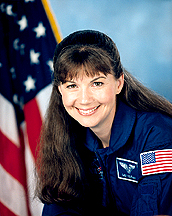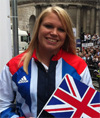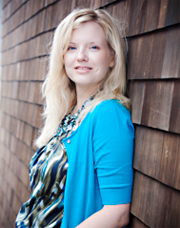Celebrating Ada Lovelace Day
Today is Ada Lovelace Day. Who is Ada Lovelace, you might ask? She lived in the mid-19th century and is considered by many to be the first computer programmer. The goal of Ada Lovelace Day is help celebrate and promote the achievements of women in the subjects of science, technology, engineering, and mathematics (aka, STEM).
Of course, we at Chandra always jump at the opportunity to highlight the role that women play not only in the scientific endeavors of the mission, but also the computer, engineering, and other critical functions of the observatory. You can meet some of these fascinating women through our blog series, Women in the High-Energy Universe (also in a printable pdf handout).
The organizers of the Ada Lovelace Day hope that this event will spur discussion and further awareness about the irreplaceable achievements women are responsible for in STEM fields. Hopefully, more people from all backgrounds are drawn toward STEM topics both during their education and once on their career paths. And we look forward to helping explore the Universe with anyone who wishes to join the journey.
-------------------------------------------------------------------
Women in the High Energy Universe

Catherine Coleman
Astronaut who helped launch Chandra into space in 1999 and since spent about 180 days aboard the International Space Station.
We're doing experiments in space that we just can't do here on the ground. The space program is at a really exciting point where we're focusing on these future goals like the Moon and Mars. People are going to explore we can't stop them. We just need to arm them with the right tools to do it.

Aneta Siemiginowska
Astrophysicist in Chandra's Science Data System group who also conducts research into black holes and galaxies.
For as long as I can remember, I wanted to learn about stars. The winter sky displayed the entire Universe right in front of me and I wanted to learn and understand the sky and the space. I do not think I understood what it meant to become an astronomer when I was a six year old, but each time somebody asked me what do I want to be when I grew up I answered, "I want to be an astronomer".

Belinda Wilkes
Senior astrophysicist who specializes in the study of supermassive black holes in the centers of galaxies.
My advice to anyone who might be interested in pursuing a career similar to mine is this: follow your heart and your abilities rather than a speciÄc career path. Plan the next step(s) along the way, but be Åexible there is always more than one way to get there. Be pro-active. Make sure you are working with good people, but make sure you also like them! If you are not happy, you will not do well.

Stacie Powell
Graduate student in astrophysics at Cambridge University in the UK, and Olympic diver for Great Britain at the 2010 London Games.
I have always had a very questioning mind and liked to learn how the physical processes and objects we see around us can be explained so simply by mathematics. The biggest question in life —"How did we get here?"— has always intrigued me. I Änd astronomy very rewarding as it provides small clues, which are beginning to be pieced together and help us answer this question and, ultimately, to understand the Universe we live in.

Dr. Giuseppina Fabbiano
Senior astrophysicist who studies galaxies, black holes and the rest of the high-energy Universe using Chandra and other telescopes.
I decided to study physics because I wanted a chance of discovering something new. My mother would have preferred that I studied classics like Latin and Greek, and a favorite uncle [said] perhaps I should look at something more practical. But physics it was. After all these years, I am still working in X-ray astronomy, and having fun with it.

Nancy Adams-Wolk
Former instrument operations scientist at the Chandra X-ray Center, ensuring that one of the telescope's main instruments is healthy and performing up to its full capacity.
As a child, I found experimenting with the world far more exciting than just playing with toys. My grandfather and I would watch for satellites and try to identify as many constellations as possible. While I have moved away from basic astronomical research, I am learning more about engineering, the quality of instruments, and how to deal with real time emergencies.

Melissa Weiss
Graphic designer for Chandra whose work can be seen online, in print, and in multimedia products for students, teachers and the public.
My career in astronomy happened or ganically. My interests weren't really up with the stars, but down on canvas with paints, pens, and any other tool that helped me be creative. Now I get to draw illustrations, design posters, create interactive features, and mold the visuals of Chandra's own website all with the intent of teaching others about our X-ray Universe and all of its mysteries.

Kimberly Arcand
Visualization Lead for Chandra, which includes oversight of a range of science outreach products and activities.
Growing up, I was the kid with the chemistry set, the microscope, and the stellarium as my favorite "toys." I loved science, or what I thought of as science: the idea of discovering something new, of figuring out puzzles, of contributing to people's lives in some significant way. I have really enjoyed my career in science communication so far because it has evolved and changed as my interests have.
-Megan Watzke & Kim Arcand, CXC
Please note this is a moderated blog. No pornography, spam, profanity or discriminatory remarks are allowed. No personal attacks are allowed. Users should stay on topic to keep it relevant for the readers.
Read the privacy statement
